GERMAN WWII DRESS BAYONET ANATOMY
THE SCABBARD
This section of the page covers the scabbard and frog (carrying mechanism) for the dress bayonet.
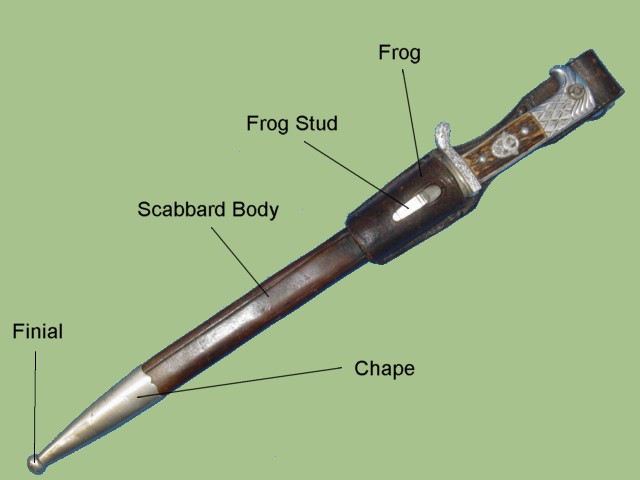
|
|
THE HANDLE
This section covers the different parts of the handle. The sample featured here is well adorned for the
purpose of showing pride in the position held. The components are far more ornamental than ohter examples.
However, the naming convention remains constant among all classes of edge weapons.
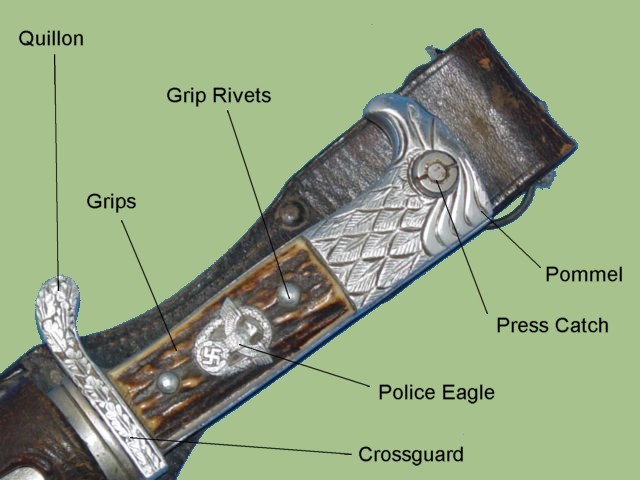
|
|
THE BLADE
The following section discusses the anatomy of the blade of the edge weapon. The chromed finish of the blade
is a clear indication that the intent of this edge weapon is clearly for show of pride.
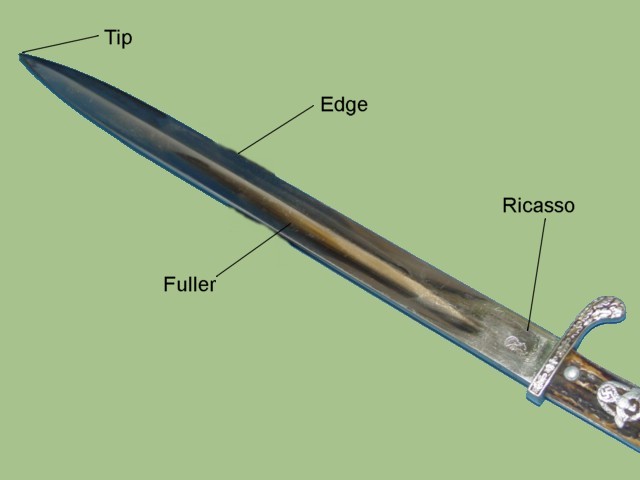
|
|
HITLER YOUTH KNIFE ANATOMY
The Hitler Youth (German: Hitler-Jugend, abbreviated HJ) was a paramilitary organization of the Nazi Party. It existed from 1922 to 1945. The HJ was the second oldest paramilitary Nazi group, founded one year after its adult counterpart, the Sturmabteilung (the SA).
The Hitler Youth was originally established in 1922 as the Jungsturm Adolf Hitler (help·info). Based in Munich, Bavaria, it served to train and recruit future members of the Sturmabteilung (or "Storm Regiment"), the adult paramilitary wing of the Nationalsozialistische Deutsche Arbeiterpartei or NSDAP, the German Nazi Party.
The Hitler Youth knife was the standard knife issued to all members of the Hitler Youth.
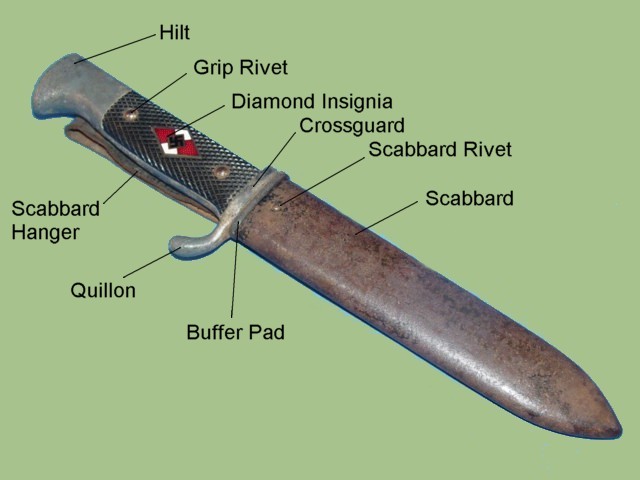
|
|
The inside of the scabbard has two pads that help guide the blade when the knife is inserted. One of
the pads is missing in this example.
|
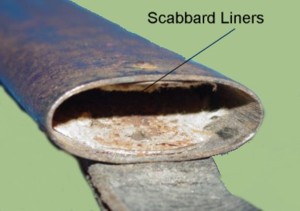 |
One side of the blade is marked with the manufacturer's logo. The other side bears the Hither Youth motto.
|
|
|
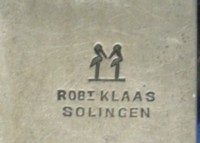 |
Some of the blades for the Hitler Youth knives were stamped with the
manufacturer's logo or
RZM markings.
The photo on the left shows the logo for Robert Klaas of Solingen.
The photo on the right shows the RZM marking. Where M7 is the designation given to
all daggers and 36 is the manufacturer's code.
|
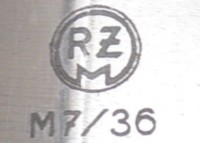 |
The manufacturer marked the Hitler Youth blades with their logo prior to 1939. After this year
the markings changed to RZM numbers. There was a time when the manufacturers placed both, their
logo and the RZM number in the blade. Blades stamped in this fashion are known as "Transitional".
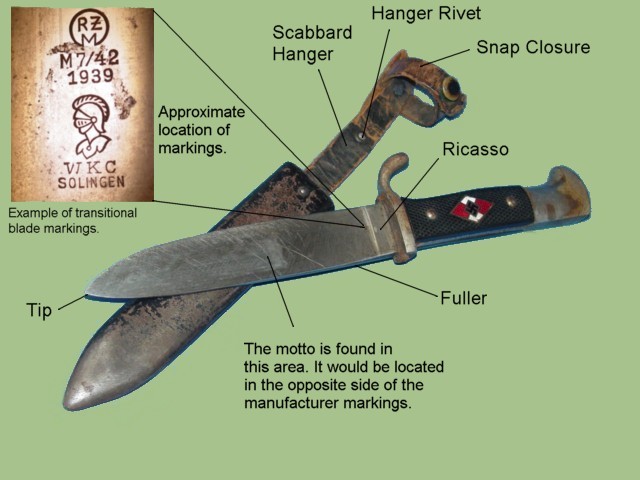
|
This is a close up view of the handle. The enameled Hitler Youth diamond insignia is one of the
most noticeable parts of the knife. The scabbard rivet is one easy way in which to recognize
reproduction knives. Its absence would indicate the knife is a fake.
|
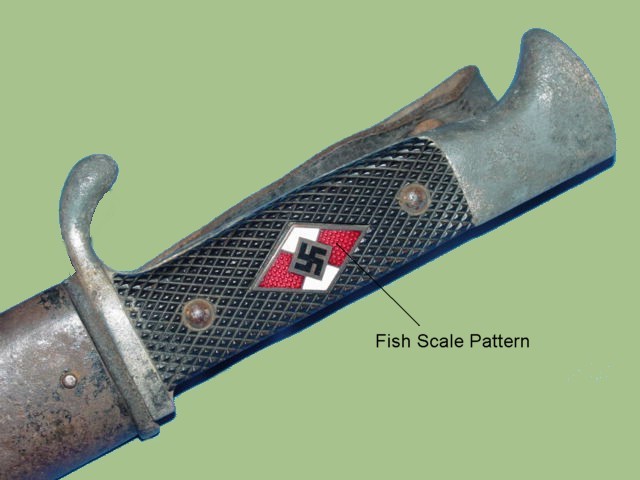 |
|
SA DAGGER ANATOMY
The Sturmabteilung, abbreviated SA (usually translated as "stormtrooper"), functioned as a paramilitary organization of the Nazi Party. It played a key role in Adolf Hitler's rise to power in the 1920s and 1930s.
The SA dagger represents one of the most interesting blades to collect. This is due to the fact that the daggers were produced in the millions since 1933 to the end of the war. During its life span, more than 100 manufacturers were known to produce the dagger. In addition, not all manufacturer's produced the entire dagger, some simply bought parts from other factories and followed through the steps of assembly. The assembling company would obtain plain blades and place their logo on them. All blades are inscribed with the phrase "Alles Fur Deutschland".
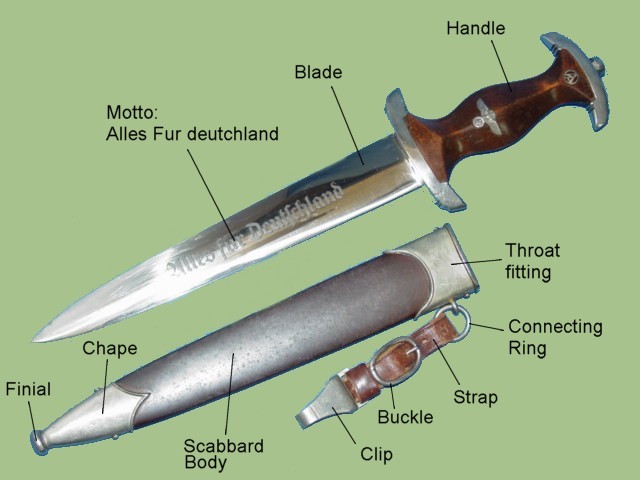
|
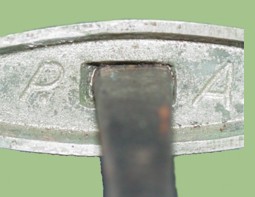 |
The SA dagger can be marked in multiple places. as shown in the photogrpahs here. The dagger was manufactured by the
Puma company.
The inside of the lower crossguard is marked with "PUMA". The blade bears the Puma logo.
|
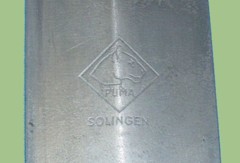 |
|
The office in charge of distributing SA daggers would stamp the district where the dagger was issued.
The district marking
was stamped in the lower crossguard. It is important to note that not all daggers were marked.
|
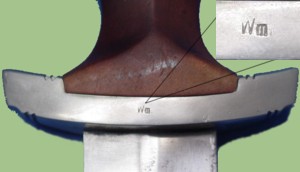 |
The motto of the dagger is placed in the opposite side of the blade as the manufacturer's logo or RZM number.
Additional places where markings could be found include the tang area. The hanger clip and the buckle and/or
connecting ring may also have markings.
|
|
|
The handle of the SA dagger is both, smooth and elegant. It was built from wood and stained dark brown. Some of
the types of wood used include: Cherry, Beech,
Fruitwood, Oak and plumbwood.
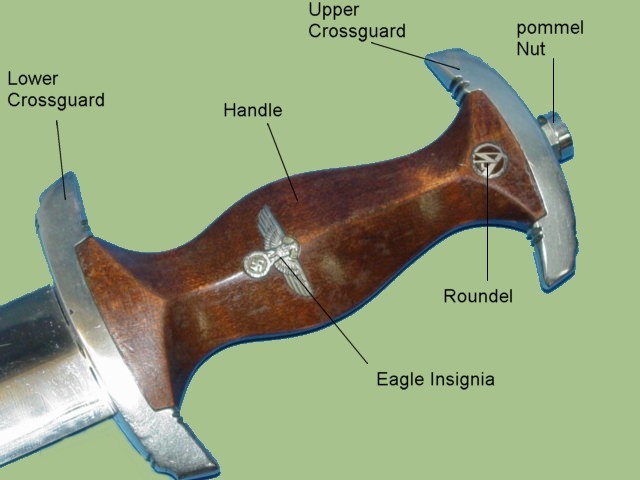
|





